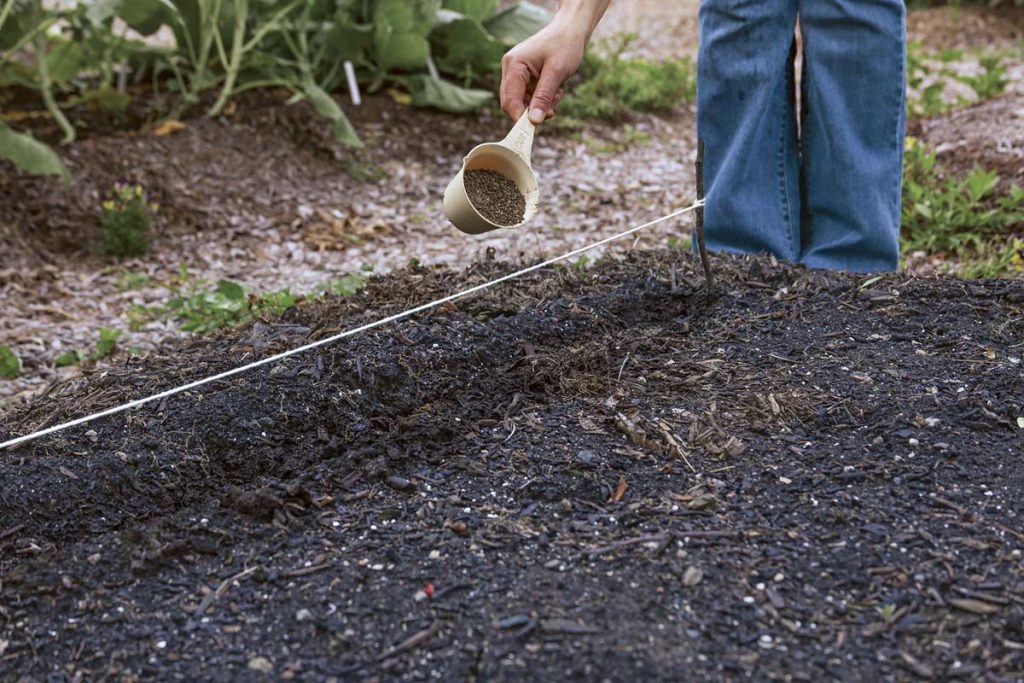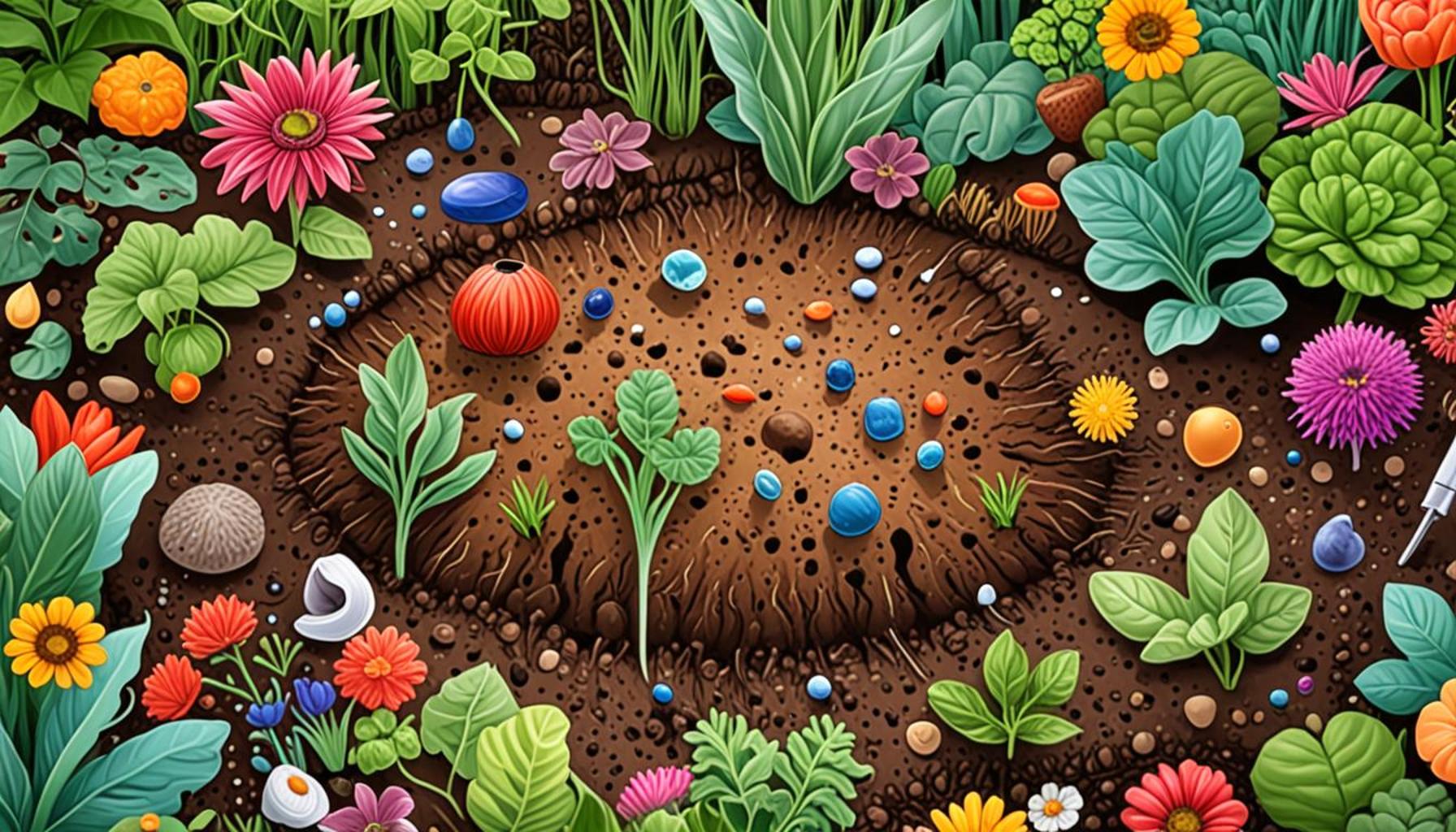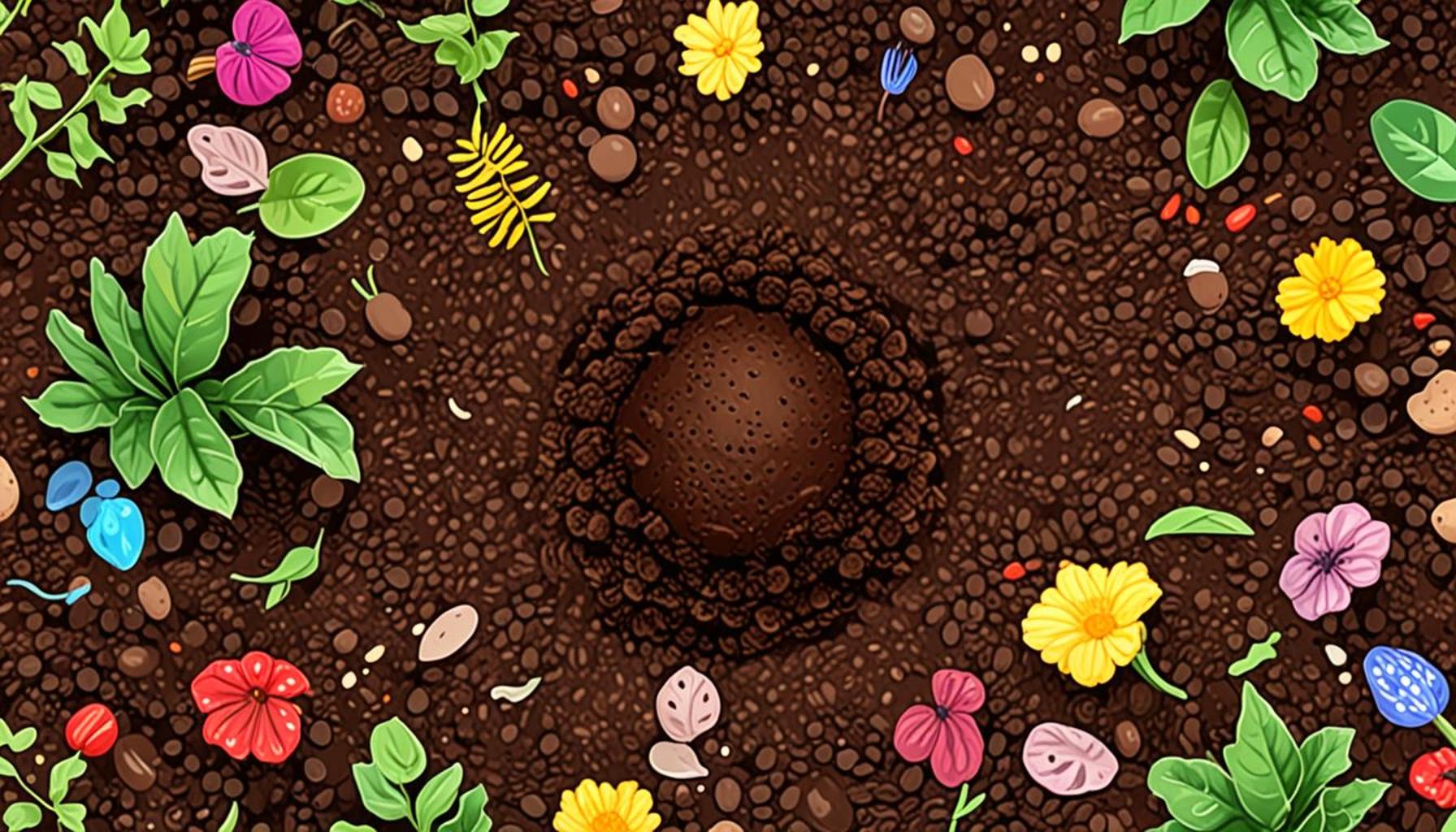Simple Techniques to Improve Soil Health in Home Gardens

Enhancing Soil Health: The Foundation of Thriving Gardens
Healthy soil is the backbone of successful gardening. It supplies essential nutrients, retains moisture, and fosters a vibrant ecosystem for plants. Here are some compelling reasons to prioritize soil health in your home garden:
- Improved Plant Growth: Stronger, healthier plants thrive in nutrient-rich soil. Nutrients like nitrogen, phosphorus, and potassium play critical roles in plant development. For example, nitrogen promotes foliage growth, phosphorus supports root health, and potassium enhances overall plant resilience. When these elements are balanced in the soil, plants can achieve their full growth potential, producing increased yields in vegetable gardens or more vibrant flowers in ornamental gardens.
- Better Water Retention: Well-aerated soil can hold moisture more effectively, reducing the need for frequent watering. This is particularly important in regions prone to drought or where water conservation is a priority. For instance, sandy soils drain quickly, while clay soils retain water but can become compacted. By enhancing your soil’s structure through practices like composting, you can achieve a balance that allows for both moisture retention and proper drainage.
- Enhanced Biodiversity: Healthy soil promotes beneficial organisms that aid in plant growth and pest control. Microorganisms, earthworms, and beneficial fungi create a living network in the soil that works to break down organic material, release nutrients, and suppress harmful pathogens. In natural ecosystems, a diverse soil microbiome can significantly boost plant health and resilience against pests, reducing the reliance on chemical fertilizers and pesticides.
Fortunately, revitalizing your soil doesn’t require professional help or extensive resources. Simple, practical techniques can make a substantial difference. Some methods to explore include:
- Composting: Recycling kitchen and garden waste to create nutrient-dense compost. By composting fruit peels, vegetable scraps, grass clippings, and leaves, you create a rich organic material that can enrich garden soil with essential nutrients. The process also reduces landfill waste and enhances soil structure.
- Cover Cropping: Planting cover crops such as clover or rye during the off-season helps to prevent soil erosion and improve soil structure. Cover crops act as a protective layer, preventing runoff and enriching the soil when turned under. They also sequester carbon, contributing positively to the environment.
- Mulching: Applying organic materials like straw, wood chips, or shredded leaves to retain moisture and add nutrients to the soil. Mulch not only conserves water by reducing evaporation but also suppresses weeds, keeping your garden tidy and reducing competition for resources.
Implementing these practices can set the stage for a flourishing garden, full of vitality and resilience. In the United States, where gardening is not only a popular pastime but also a means to cultivate local food systems, investing in soil health becomes not just beneficial but essential. By adopting these simple techniques, every home gardener can contribute to a healthier planet while enjoying the personal satisfaction of a thriving garden.
DISCOVER MORE: Click here to learn about the impact of plant diversity on soil health
Practical Steps to Cultivate Healthy Soil
Enhancing soil health in your home garden can seem daunting, but it doesn’t have to be. By adopting a handful of simple techniques, you can significantly boost the vitality and productivity of your garden soil. Let’s explore some actionable strategies that not only nourish the ground beneath your plants but also empower you as a gardener.

1. Embrace the Power of Composting
Composting is one of the most effective ways to improve soil health. This practice involves recycling organic waste from your kitchen and garden into a nutrient-rich product. You can compost items such as vegetable scraps, fruit peels, eggshells, coffee grounds, and yard waste like leaves and grass clippings. The process not only revitalizes your soil with essential nutrients but also helps reduce landfill waste, making it an environmentally friendly option. Studies show that compost can enhance soil structure, increase its moisture retention capacity, and even promote a diverse microbial population which is vital for healthy plant growth.
2. Unlocking the Benefits of Cover Cropping
During the offseason, consider planting cover crops like clover, rye, or vetch. These plants not only prevent soil erosion but also enrich your soil when tilled back into the ground. Cover crops improve soil structure, promote biodiversity, and even fix nitrogen in the soil, which benefits subsequent crops. As they grow, these plants serve as a barrier against harmful weeds and contribute organic matter when they decompose, making them a powerful ally in maintaining soil health.
3. The Art of Mulching
Mulching is another simple yet highly effective technique for improving soil health. By applying a layer of organic material like straw, wood chips, or shredded leaves on the soil surface, you can help retain moisture, suppress weeds, and build up the nutrient content of your soil over time. Mulch can reduce evaporation by up to 30%, ensuring that your plants receive the hydration they need, especially during hot summer months. Additionally, as organic mulch breaks down, it adds valuable nutrients back into the soil, promoting a thriving ecosystem that benefits your garden.
4. Practicing No-Till Gardening
No-till gardening is an innovative approach that minimizes soil disruption. Instead of turning the soil, you plant directly into the ground, which preserves the natural structure and habitat for beneficial organisms like earthworms and fungi. This practice helps maintain soil moisture and minimizes soil erosion. Research indicates that no-till methods can lead to improved soil health and fertility over time, making this technique a pivotal aspect of creating a sustainable home garden.
Incorporating these simple techniques into your gardening routine can lead to profound improvements in soil health. As you implement these practices, you’ll be on your way to not just cultivating a successful garden, but also contributing positively to the environment. With every handful of enriched soil, you are aiding the growth of sustainable ecosystems, making home gardening a rewarding endeavor that extends beyond personal enjoyment.
| Technique | Advantages |
|---|---|
| Cover Cropping | Enhances soil structure and prevents erosion. |
| Composting | Improves nutrient content and microbial activity. |
| Mulching | Retains moisture and regulates soil temperature. |
| Soil Testing | Identifies nutrient deficiencies and pH levels. |
Incorporating cover cropping into your gardening routine can significantly enhance the health of your soil. Planting cover crops helps build organic matter, which improves the soil structure and prevents erosion. Moreover, using a variety of plants can fix nitrogen in the soil, making it more fertile for subsequent crops.Another efficient method is composting, a natural process that transforms kitchen scraps and yard waste into nutrient-rich material. Compost enriches garden soil, supports microbial activity, and can vastly improve plant growth by increasing the availability of essential nutrients. This technique can turn waste into a valuable resource, further supporting sustainability.Employing mulching as a covering for your garden beds can also yield various benefits. It not only helps retain moisture, ensuring plants stay hydrated during dry spells, but also regulates soil temperature. Additionally, a good layer of mulch can prevent weed growth, further aiding soil health.Finally, conducting regular soil testing is crucial for maintaining proper nutrient levels. Understanding your soil’s pH and nutrient content can guide your gardening practices, allowing you to amend the soil appropriately and support your plants’ needs. Informed decisions based on testing can lead to healthier plants and increased yields.
DIVE DEEPER: Click here to learn more about optimal soil mixtures
Advanced Techniques for a Thriving Soil Ecosystem
Building on the foundational practices of composting, cover cropping, mulching, and no-till gardening, there are additional strategies that can further enhance the health of your home garden soil. By integrating these advanced techniques into your gardening routine, you not only improve soil quality but also contribute to a more sustainable gardening experience.
5. Integrating Crop Rotation
One of the traditional yet highly effective methods to maintain soil health is crop rotation. This practice involves alternating the types of crops grown in your garden each season. Different plants have varying nutrient requirements and pest profiles, allowing you to naturally replenish soil nutrients and disrupt pest cycles. For instance, rotating heavy feeders like tomatoes and corn with nitrogen-fixing crops such as legumes can ensure a healthier nutrient balance in the soil. Effective crop rotation decreases the chance of soil-borne diseases and promotes soil biodiversity, essential for a robust garden ecosystem.
6. Harnessing the Benefits of Organic Amendments
To further enrich your soil, consider using organic amendments such as bone meal, fish emulsion, or kelp meal. These materials are rich in nutrients and beneficial minerals that feed soil microorganisms. For example, bone meal provides a slow-release form of phosphorus, crucial for root development, while fish emulsion offers a comprehensive nutrient profile that caters to plants throughout their life cycle. Regularly incorporating organic amendments can significantly improve your soil’s fertility, promoting healthier plants that are better equipped to resist pests and diseases.
7. Testing Soil Health
Knowing the current state of your soil is vital for any improvement efforts. Conducting a soil test can provide valuable insights into the nutrient composition, pH level, and organic matter content of your garden soil. Many cooperative extension services offer testing for a nominal fee, and results will help you determine what amendments, fertilizers, or adjustments are needed to optimize your soil health. Understanding these factors allows gardeners to make informed decisions that align with the specific needs of their plants, leading to enhanced growth and productivity.
8. Biodiversity Through Intercropping
Intercropping, the practice of growing two or more crops in proximity, can also foster soil health. This technique promotes biodiversity, which is crucial for a resilient garden. When you interplant complementary species that offer different nutrient requirements, such as pairing corn with beans (a classic companion planting technique), you can maximize space, reduce weed growth, and minimize pest outbreaks. Moreover, diversified plant life contributes organic matter to the soil and enhances its overall structure, which is vital for maintaining moisture levels and encouraging beneficial microorganisms.
9. Encouraging Soil Microorganisms
The microscopic life within your soil plays an unprecedented role in maintaining its health. Encouraging a diverse community of soil microorganisms—such as bacteria, fungi, and protozoa—can lead to robust nutrient cycling and disease suppression. One way to promote this biodiversity is by avoiding chemical pesticides and fertilizers that might harm beneficial organisms. Instead, consider using natural alternatives like neem oil or beneficial nematodes to manage pests. Additionally, practices like adding worm castings or using mycorrhizal fungi can enhance the microbial population, resulting in a more dynamic and resilient soil ecosystem.
By embracing these advanced techniques alongside basic practices, you’re not just improving soil health; you’re transforming your home garden into a thriving ecosystem. As ongoing practices and discoveries in sustainable gardening evolve, remaining inquisitive and adaptive will empower you to cultivate an environment where both your garden and your knowledge can flourish.
DIVE DEEPER: Click here to learn more about soil health
Conclusion: Cultivating Healthy Soil for a Thriving Garden
In conclusion, the journey toward enhancing soil health in your home garden is an ongoing and rewarding endeavor. By adopting a combination of fundamental practices such as composting, mulching, and no-till gardening, along with advanced techniques like crop rotation and intercropping, you can create a thriving ecosystem that supports robust plant growth. Integrating organic amendments and regularly testing your soil leads to more informed gardening choices, ensuring that your plants receive the necessary nutrients to flourish.
Embracing biodiversity through practices that nurture soil microorganisms not only improves the quality of your garden’s soil but also contributes to environmental sustainability. This synergy between nature and cultivation helps develop a resilient garden that requires fewer interventions while increasing its productivity. Simple conscious choices taken today can have a lasting impact on the health of our soils, thus securing a better gardening experience for the future.
As you explore these simple techniques to improve soil health, remember that every garden is unique. Stay curious, keep experimenting, and allow Mother Nature to guide you. In doing so, you’ll discover the joy of cultivating not just plants but a vibrant community of life underneath your feet. Happy gardening!



